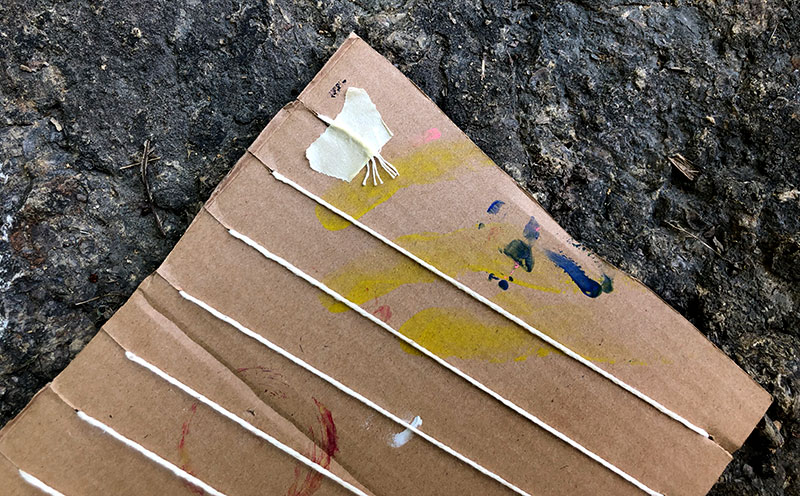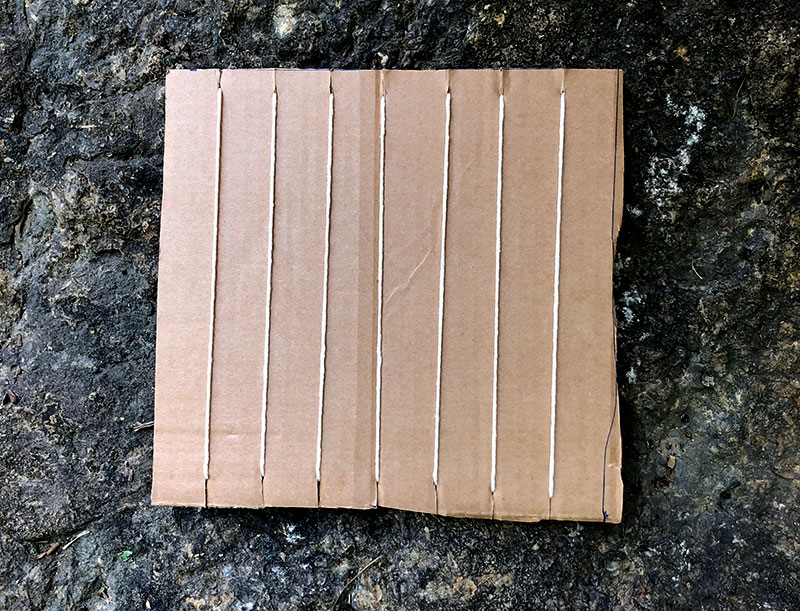
In summer, the unmowed and ungrazed portions of the farm brim with wildflowers. Pastures become a feast for the eyes, full of daisies, black-eyed Susans, milkweed, coneflowers, bee balm and more. I like to leave most of the flowers where they are so important pollinators such as bees, butterflies and hummingbirds can get their share of the nectar. But with some I take the opportunity to get up close and personal with my farm’s botanical wildlife. Wildflower looms like I’ll show you to make here are a great activity for kids of all ages to explore the colors, textures and smells of the flowers. Doing so leaves them with a greater appreciation for the beauty around the farm.
Make Your Loom
Depending on the age of your children, you can make the looms for this activity ahead of time or save that to be part of the experience

For the base of each loom, I cut up a recycled cardboard box into 8-by-8-inch squares using a box cutter. (Supervise this carefully if you’re letting small hands help.) I advise cutting several squares because you can enjoy this activity any season, so it’s nice to have some extras ready to go.
Next, cut inch-deep notches into the cardboard spaced about an inch apart on two opposing sides of the square.

Securing a piece of string to the back of the cardboard with a piece of tape, wrap the string through the notches to create your loom.

Cut the string and secure the end with another piece of tape.
Weave Your Wildflowers
Again, depending on the age and temperaments of your children, this activity can last 15 minutes or several hours. Head outside, each child with a loom, and begin to explore. As a child finds a wildflower—or even a leaf or plant—that catches his or her eye, encourage the youngster to pick a specimen and weave it into the loom.

The spacing of the weaving materials can be tight or loose depending on your child’s taste and dexterity.

I find that a variety of sizes and colors of wildflowers and plants makes for a more interesting final product, but whatever gets weaved into the loom ends up being a beautiful piece of art. Display the looms at home while they are still fresh to remind your family of your farm day—some looms even turn out quite pretty when dried.

Create Little Citizen Scientists
As your children observe and touch the wildflowers during your looming adventures, explain the role these flowers play in the ecosystem as well as the importance of picking only a few flowers from a stand. Ask them what they notice about the details of the plant—the texture, the color, the smell, the things living on it or eating from it. By practicing these observational skills, they are becoming citizen scientists and gaining a better understanding of the land and all it has to offer.




